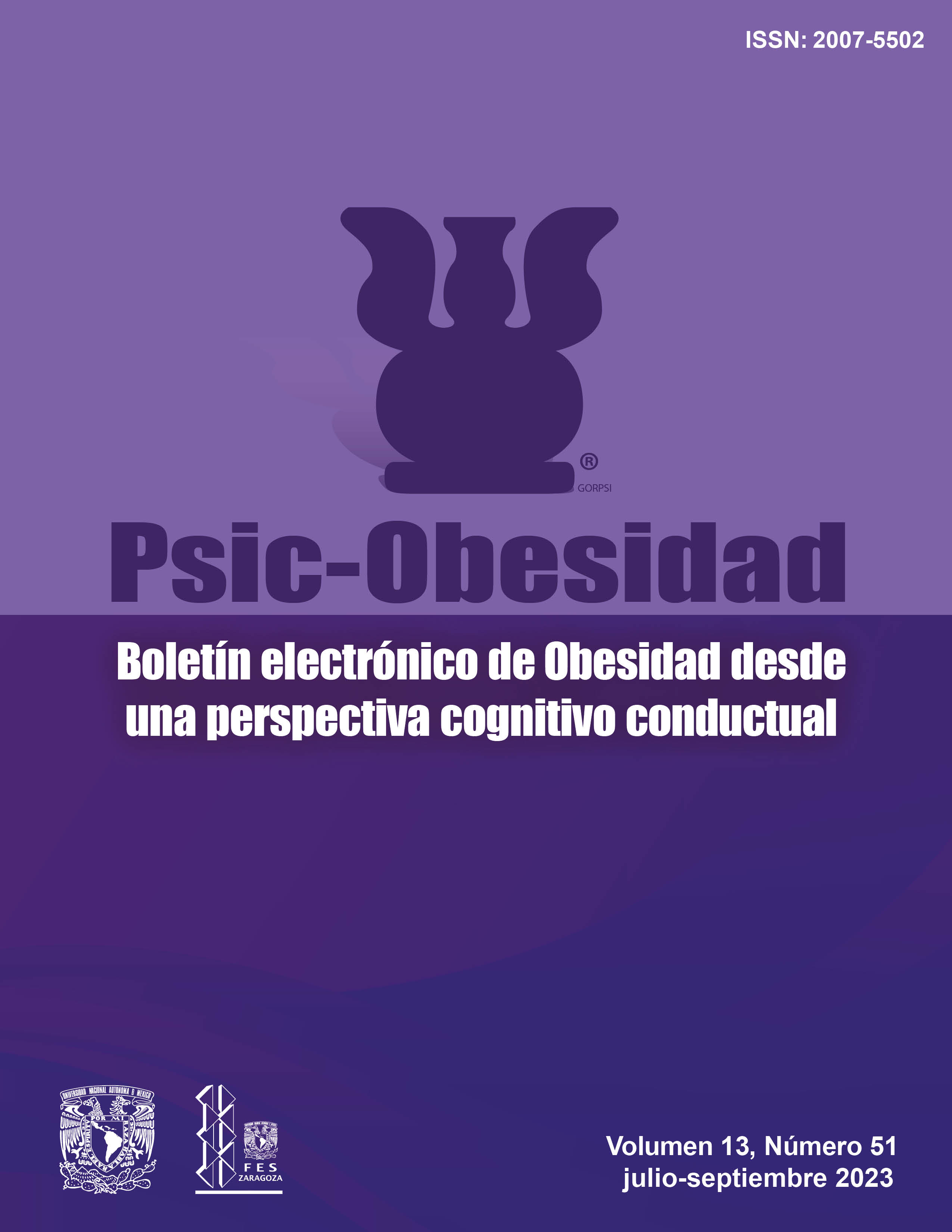Biopsychosocial environment characteristics of overweight and obese children
Main Article Content
Abstract
Childhood obesity is a public health problem, since in the last 20 years the number of cases has increased considerably worldwide, becoming a pandemic that affects the health of children chronically, in the medium and long term. According to the 2014 report of the Commission on Ending Childhood Obesity of the World Health Organization (WHO) in the world the number of children under 5 years of age suffering from overweight or obesity increased from 32 million in 1990 to 42 million in 2013, and the World Bank reports that in low and middle income countries the prevalence of childhood overweight and obesity in preschoolers exceeds 30%; if this trend continues, the number of overweight children under 5 years of age will increase to 70 million in 2025 (WHO, 2020). In Mexico, the biopsychosocial factors that pediatric patients with overweight and obesity have in common are unknown, so this article reviews different proposals to address the intervention in this population and the contextual factors that may be involved in order to generate a real change in the approach to this disease and that this is reflected in the decrease of its incidence.
Downloads
Article Details
Citas en Dimensions Service
References
Ariza, C., Ortega-Rodríguez, E., Sánchez-Martínez, F., Valmayor, S., Juárez, O. y Pasarín, M. I. (2015). La prevención de la obesidad infantil desde una perspectiva comunitaria. Aten Primaria, 47(4), 246-55. DOI: 10.1016/j.aprim.2014.11.006 0212-6567
Avelar-Rodríguez, D., Toro-Monjaraz, E. M., Ignorosa-Arellano, K. R. & Ramírez-Mayans, J. (2018). Childhood obesity in Mexico: social determinants of health and other risk factors. BMJ Case Rep. https://doi.org/10.1136/bcr-2017-223862
Borys, J. M., Le Bodo, Y., Jebb, S. A., Seidell, J. C., Summerbell, C., Richard, D., De Henauw, S., Moreno, L. A., Romon, M., Visscher, T. L., Raffin, S., Swinburn, B., & EEN Study Group (2012). EPODE approach for childhood obesity prevention: methods, progress and international development. Obesity reviews : an official journal of the International Association for the Study of Obesity, 13(4), 299–315. https://doi.org/10.1111/j.1467-789X.2011.00950.x
Bronfenbrenner, U. (1992). Ecological systems theory. En R.Vasta (Ed.), Six theories of child development: revised formulations and current issues. (Pp 187-249). Jessica Kingsley Publisher.
Casey, R., Oppert, J. M., Weber, C., Charreire, H., Salze, P., Badariotti, D., et al. (2014). Determinants of childhood obesity: ¿What can we learn from built environment studies? Food Qual Prefer, 31, 164-72. DOI:10.1016/j.food-qual.2011.06.003
Cole, T. J., Bellizzi, M. C., Flegal, K. M. & Dietz, W. H. (2000). Establishing a standard definition for child overweight and obesity worldwide: international survey. Bmj. 320(7244),1240-1249. DOI: 10.1136/bmj.320.7244.1240
Diez-Roux, A. V. (2007). Integrating Social and Biologic Factors in Health Research: A Systems View. Ann Epidemiol, 17(7), 569-574. DOI: 10.1016/j.annepidem.2007.03.001
Fondo de las Naciones Unidas para la Infancia (UNICEF). (2021). El rol de la escuela en la prevención del sobrepeso y la obesidad en estudiantes de América Latina y el Caribe. https://www.unicef.org/lac/media/30431/file/El-rol-de-la-escuela-en-la-prevencion-del-sobrepeso.pdf
Instituto Nacional de Salud Pública (INSP). (2016). Encuesta Nacional de Salud y Nutrición - Medio camino 2016. https://ensanut.insp.mx/encuestas/ensanut2016/index.php
Macias, A. I., Gordillo, L. G. y Camacho, E. J. (2012). Hábitos alimentarios de niños en edad escolar y el papel de la educación para la salud. Rev Chil Nutr, 39(3), 40-43. DOI: 10.4067/S0717-75182012000300006
Martos, G., Gil, M., Bueno, G., Bahillo, P., Bernal, S., Feliu, A., et al. (2014). Las alteraciones metabólicas asociadas a la obesidad están ya presentes en los primeros años de vida: estudio colaborativo español. Nutr Hosp. 30(4), 787-793. DOI: 10.3305/nh.2014.30.4.7661
Mussini, M., y Temporelli, K. L. (2013). Obesidad: un desafío para las políticas públicas. Estud Soc Hermosillo Son, 21, 165-184. https://www.scielo.org.mx/scielo.php?script=sci_arttext&pid=S0188-45572013000100007
Organización Mundial de la Salud (OMS). (2020). Obesidad y sobrepeso. https://www.who.int/es/news-room/fact-sheets/detail/obesity-and-overweight#:~:text=La%20prevalencia%20del%20sobrepeso%20(lo,de%20los%20ni%C3%B1os%20ten%C3%ADan%20sobrepeso.
Pérez-Morales, M. E., Bacardí-Gascón, M., Jiménez-Cruz, A. y Armendáriz-Anguiano, A. (2009). Intervenciones aleatorias controladas basadas en las escuelas para prevenir la obesidad infantil: revisión sistemática de 2006 a 2009. Arch Latinoam Nutr, 59, 253-259. DOI: 10.1016/j.anpedi.2014.08.010
Rivera, J. Á., de Cossío, T. G., Pedraza, L. S., Aburto, T. C., Sánchez, T. G. & Martorell, R. (2014). Childhood and adolescent overweight and obesity in Latin America: a systematic review. Lancet Diabetes Endocrinol, 2(4), 321-332. DOI: 10.1016/S2213-8587(13)70173-6
Rivera-Dommarco, J. Á., Aguilar-Salinas, C. A. y Hernández-Ávila, M. (2015). Obesidad en México: recomendaciones para una política de Estado. Universidad Nacional Autónoma de México. Dirección General de Publicaciones y Fomento Editorial.
Secretaria de Salud. (2009). “Tour de la vida”, Programa para detectar enfermedades crónico-degenerativas. Comunicado de prensa. México Sano, 2(12), 32. México. http://www.salud.gob.mx/ssa_app/noticias/datos/2009-09-24_4168.html
Wang, Y. C., McPherson, K., Marsh, T., Gortmaker, S. L. y Brown, M. (2011). Health and economic burden of the projected obesity trends in the USA and the UK. The Lancet, 378(9793), 60814-3. DOI: 10.1016/S0140-6736(11)60814-3.
